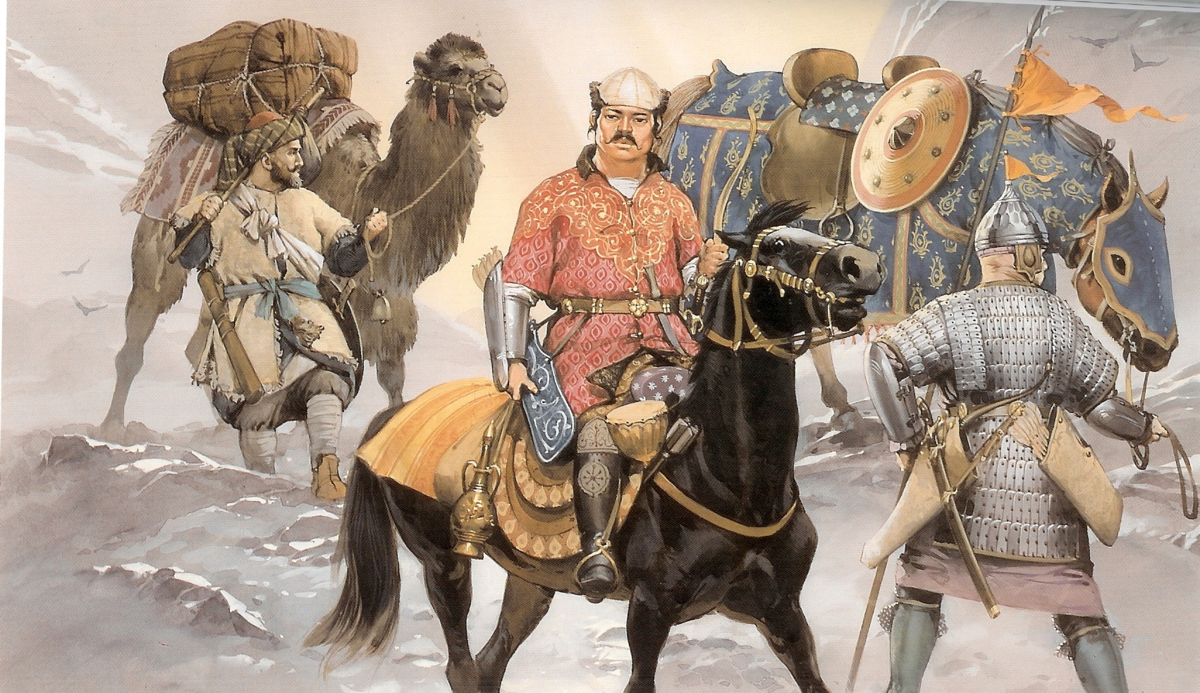The current Turkic peoples are usually classified by language. This approach is used for the reason that nomadic Turkic groups had high mobility, often mixed with each other and assimilated the sedentary population. Therefore, among their descendants there are representatives of Caucasoid, Mongoloid and transitional races.

The classification is not based on the contemporary situation. On the contrary, it uses the criterion of belonging to those medieval associations that were active a thousand years ago and more. When the Turkic Kaganate collapsed, smaller steppe unions entered the arena of history and became the ethnic core of Azerbaijanis, Turks, Turkmens, Kyrgyz, Tatars, Kazakhs, Uzbeks and other peoples.
Initially, these confederations were not very different from each other. The difference was not so much ethnic as political — these or those tribes concluded a treaty and stood together against common opponents. This structure was not completely impenetrable: individual members could leave the union, or it would accept new members.
But then, due to centuries of relatively isolated existence, economic strife, and assimilation of one or another tribal group, differences began to accumulate. The same thing happened in every part of the world. Thus new associations arose, which became the prototype of modern nations.
In the 10th century, the strongest of them were the Oguzes, Karlukes and Kipchaks. The first originally lived east of the Aral Sea, but gradually migrated closer to the Caspian Sea. At that time they had a predominantly Mongoloid appearance — this is the consensus of Arab historians. As they converted to Islam, they began to be called Turkmens («Turks who accepted the faith») — the word then referred to all Oguz peoples, not just one.
In time, they developed a proto-state — the power of the Oguz Yabgu. Although part of the Oguzes separated and went to the steppes of Eastern Europe — these people we know under the name of Pechenegs. After several centuries of relatively prosperous existence, the Oguzes faced a shortage of land. They lacked pastures, which led to internecine struggles. Then a part of this union separated and went to the south.
Under the rule of the Seljuk family, they founded an empire in the Islamic west, whose descendants are Turks and Azerbaijanis. Those who remained at home became the basis for the emergence of the Turkmen. Also, close to them are the Khorasan Turks — these are the same Turkmen, but of the Shiite faith.
At the beginning of the early Middle Ages, the Karluk nomads roamed east of Lake Balkhash, then moved south and west. They rose to prominence after the collapse of the unified Turkic empire and fought and made alliances with China and the Arab Caliphate. The prize in this struggle was Maverannahr, which they conquered over time.
Muslim sources describe them as the «most beautiful» of the Turks because of their predominantly Caucasoid appearance. In the middle of the 9th century, the Karluk founded the first Turkic state in history, where the settlement of nomadic tribes began. They were also the first Turks to convert to the Islamic faith.
Part of the Karluks became part of the Oghuz, although their main descendants are Uzbeks and Uyghurs. Although the latter are Karluk-speaking, they got their name from an ancient Turkic people, which is closer to the following participants of our narrative.
The Kipchaks began their long journey in the steppes on the border with China. In time they moved westward and met the end of the early Middle Ages in the south of Siberia. Here they became part of the Kimak Kaganate. But due to successful wars they eventually expanded the controlled territory and absorbed their former suzerains.

In the 1030s they crossed the Volga and drove the Pechenegs further away. Now their possessions stretched from the Danube to the Irtysh. The Kipchaks lived far away from major centers of civilization, in a region where steppe landscapes prevail. Therefore, their descendants retained a nomadic way of life for the longest time.
The western campaign of the Mongols was actually aimed at conquering the steppes belonging to the Kipchaks. That is why the Golden Horde was predominantly a Kipchak state. This group of tribes, like other Turks, emerged on a significant Scythian substrate, but in the Horde era was strongly Mongolized.
The descendants of the Kipchaks are Kazakhs, Nogai, Crimean and Siberian Tatars, Karakalpaks, Karachais and Balkars. And in general, they were incorporated into almost all Turkic peoples.
But we should not forget about the disappeared group of Turkic languages — Bulgar, which is also called Ogur. It includes the Bulgars proper, the Khazars close to them in origin, as well as hypothetically — Avars and Huns. The Kazan Tatars, the largest and descendants of the ancient Bulgars, switched to the Kipchak language in the High Middle Ages. But their native brothers Chuvashs retained their dialect.
There are other Turkic ethnic groups of smaller size, which are either singled out in separate groups, or by language are referred to the Kipchaks, Karluks, Oguzes, but their origin is somewhat different. Thus, the Bashkirs and, partly, the Kirghiz are part of the Kipchak linguistic group, but they are among the first isolated Turkic peoples.
